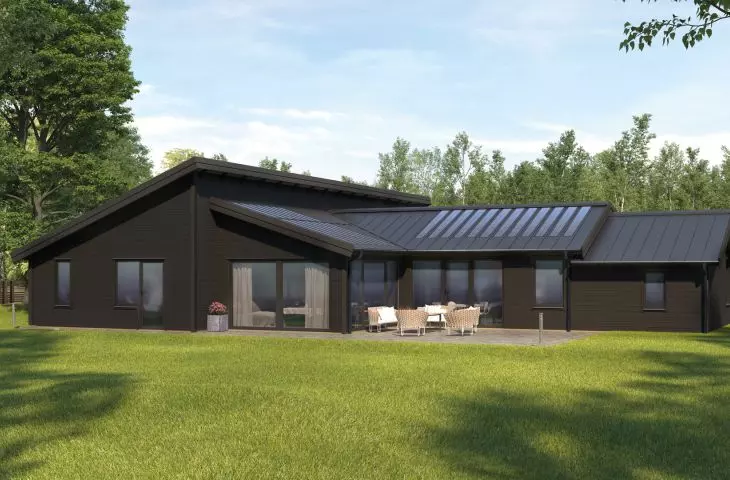Net Zero Energy Buildings (NZEB) are low-energy buildings that use renewable energy sources (RES) to cover the facility's total annual consumption.
NZEB buildings, on the one hand, use proven, affordable technologies that reduce energy consumption (LED, A++/A+++ appliances) and reduce emissions (heat pumps), and on the other hand, are equipped with zero-emission energy generators (photovoltaic generators/wind turbines).
The NZEB standard is important because it is estimated that 36% of global energy consumption is generated by residential buildings, coupled with the 39% share of housing in global carbon emissions. The "Fit for 55" regulatory package that is part of the European Green Deal builds a framework for NZEB, and specific EU policies like the "Renovation Wave" mention BIPV as an often necessary solution to achieve planned goals. Building Integrated Photovoltaics (BIPV) are photovoltaic modules aesthetically incorporated into the building material, which are often unnoticeable to the observer.
Lindab SolarRoof™ - a durable roof with integrated photovoltaic panels
© Lindab
BIPV modules are laminated photovoltaic cells that use ethylene-acetate copolymer (EVA) or polyvinyl butyral (PVB) as the material to give optical clarity, but also strength and flexibility. The properties of BIPV allow much greater installation versatility compared to traditional photovoltaic modules based on a heavy metal substructure. Due to their several times lighter weight than conventional photovoltaic panels, BIPV modules are suitable for installation on roofs with fragile/requiring reinforcement roof trusses or at commercial structures, where the performed roof statics significantly limit the possibility of installing traditional photovoltaics. What's more, BIPV solutions are non-invasive to the roof covering. An example of such a solution is Lindab SolarRoof™- a durable roof with integrated photovoltaic panels.
Curved roofs are another example of the significant advantages of BIPV solutions over conventional panels - manufacturers of substructures for conventional modules deny warranties in such applications. The practice of working with historic preservationists on revitalization projects shows that BIPV solutions mostly win their favor, as BIPV modules preserve the original geometry of the buildings, but are also almost invisible - they structurally penetrate the building material. BIPV makes it possible to more effectively cover the surface of roofs with different architecture relative to traditional counterparts. The integration of photovoltaic modules into facades preserves their original function, safety and aesthetics, allowing the production of electricity all year round.
Lindab SolarRoof™ - a durable roof with integrated photovoltaic panels
© Lindab
Depending on the climate zone of the location of the designed building equipped with a BIPV facade solution, it is possible to use a photovoltaic system in the form of photovoltaic blinds or photovoltaic glazing. A glass roof over an atrium or skylights/slope windows can be an excellent application of photovoltaic BIPV glass, i.e. glass with incorporated photovoltaic cells by rotary screen printing.
Glass BIPV can also be used on the shading elements of the balcony/terrace (balustrade/roof/facade), and smart EMS systems allow to regulate the degree of illumination and temperature of the building interior. Bottom line: the ever-growing interest in BIPV solutions for zero-energy buildings is expanding the range of possible applications and functionalities of this technology.
Mariusz KAMASZEWSKI
Renewable energy expert
Lindab Polska
mariusz.kamaszewski@lindab.com

















